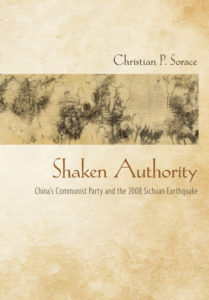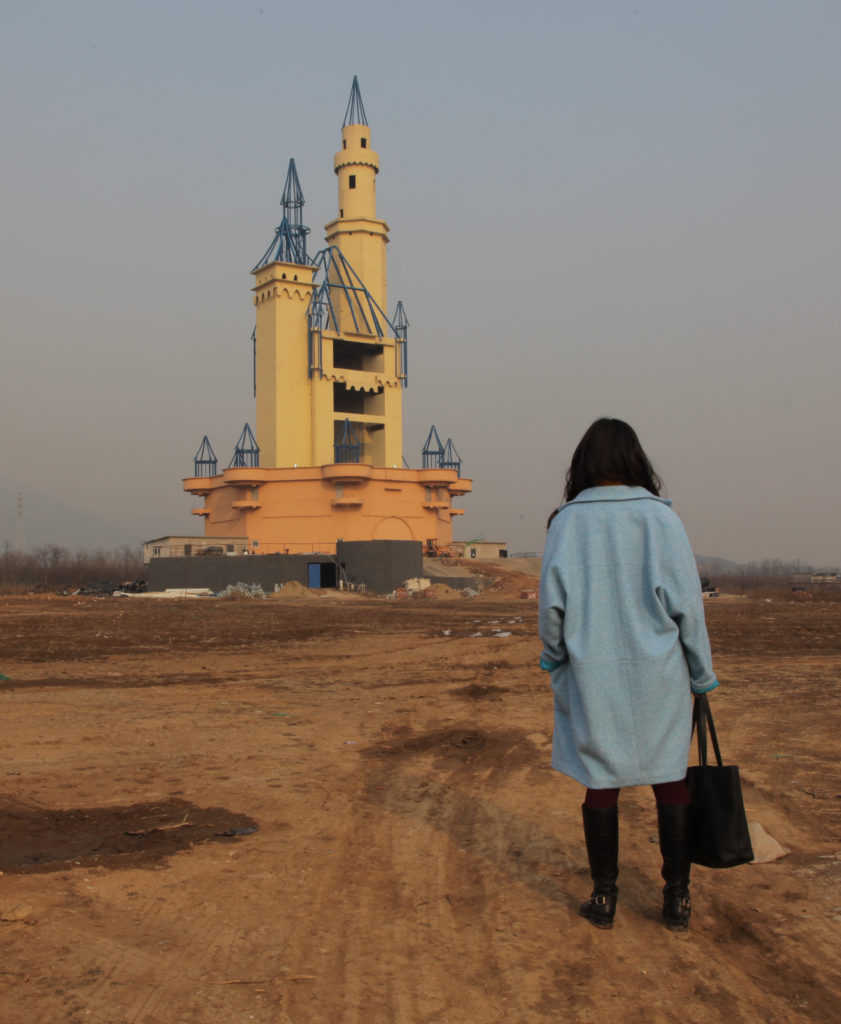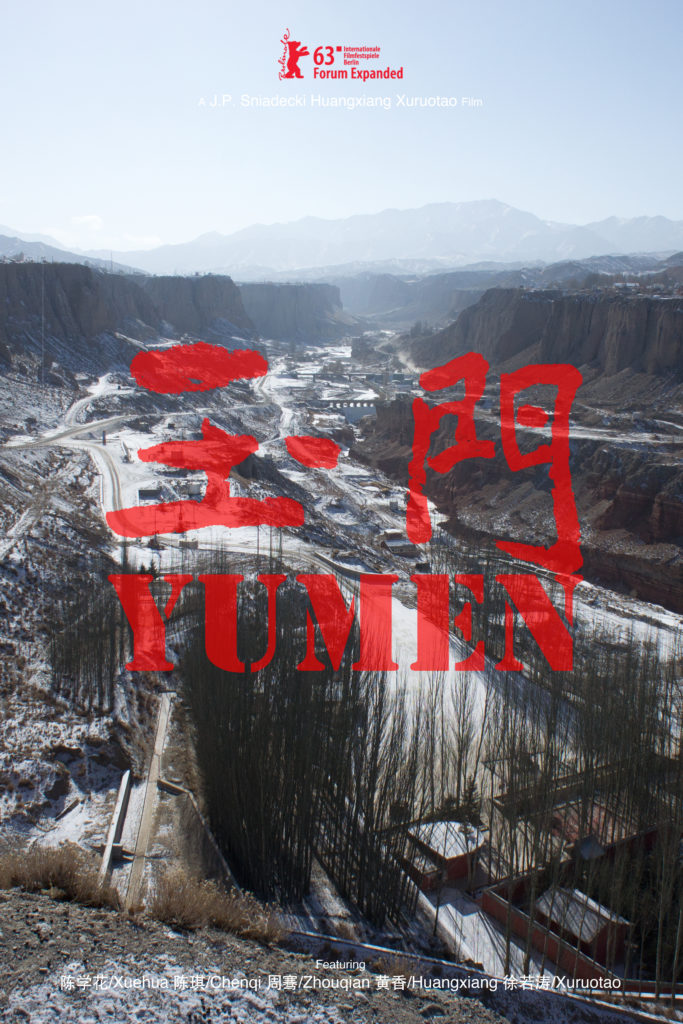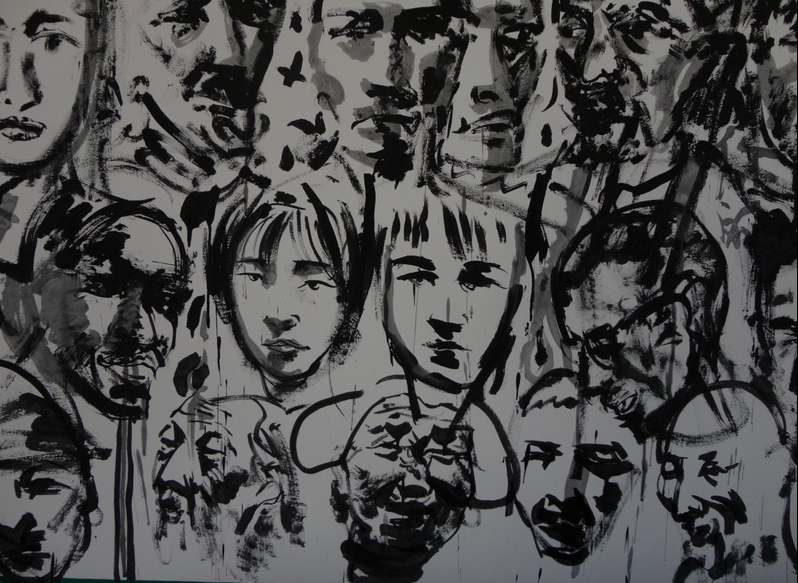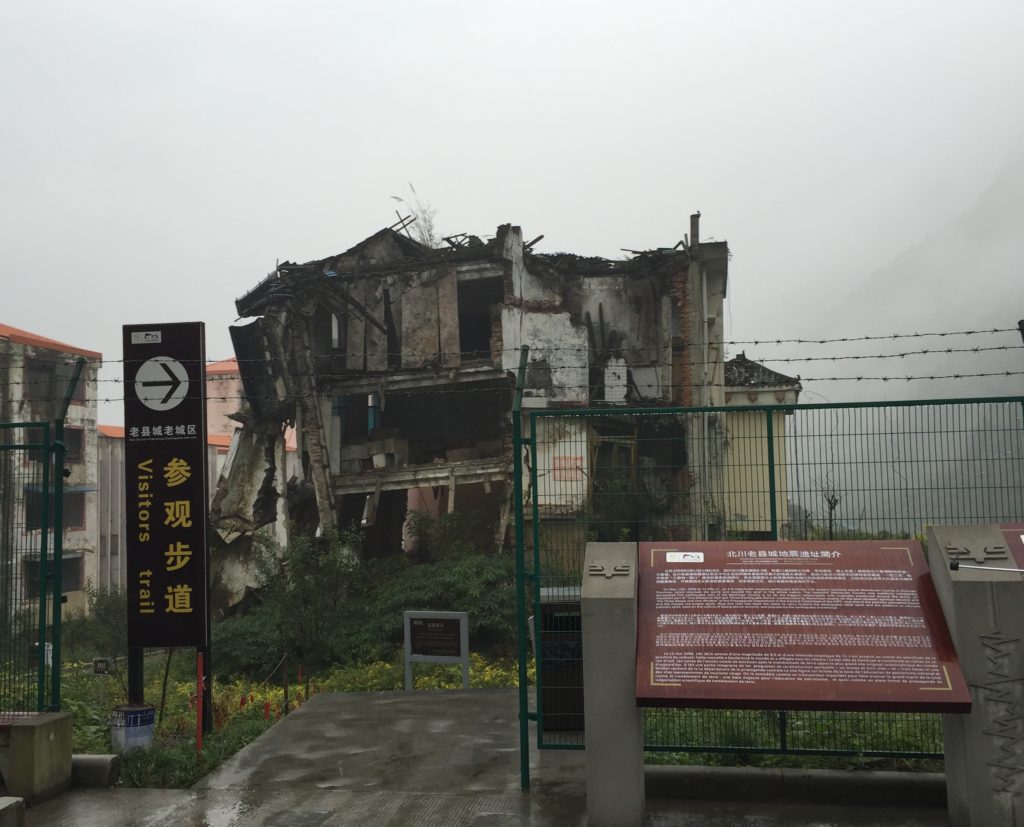Research Network on Urban Ruins in Contemporary China
当代中国城市废墟的研究网络
Members
Annabella Massey, PhD candidate, Oxford University
Annabella’s thesis focuses on the interesting notion of « therapeutic aesthetics » in contemporary Chinese literary and visual representations of urban space. She is currently finishing a chapter on the photography of urban exploration in mainland China, looking mostly at Zhao Yang’s (« The Cooling Plan ») work.
You can find her contact here.
Keywords: aesthetics; urban exploration; photography; Beijing.
Bin Xu, sociologist, assistant professor, Emory University, Atlanta
Dr Bin Xu is a specialist of the political sociology of disasters in China, but also does a lot of research in the field of collective memory. His last book is entitled The Politics of Compassion: The Sichuan Earthquake and Civic Engagement in China, where he discusses the social presence of the ruins of the earthquake through what he calls « the topography of forgetting ».
He also recently published: Bin Xu. 2018. « Commemorating a difficult disaster: Naturalizing and denaturalizing the 2008 Sichuan earthquake in China. » Memory Studies. 11 (4): 483-497.
For more information about him and his research, you can visit his page here.
Keywords: sociology; memory; disaster; earthquake; forgetting; Sichuan.
Burbex, urban explorer based in Beijing
Brïn is an English urban explorer based in Beijing. He has been my very first contact with urban exploration in China, you can check out his great photography blog here. He is a close friend and an interesting character, very dynamic and always available when it comes to hang out in weird places.
You can contact him for any project you would have in an abandoned building of Beijing, he knows them all.
Keywords: urban exploration; photography and video; Beijing.
Caroline Iorio, architect, PhD candidate at École Polytechnique Fédérale de Lausanne
I met Caroline last year and we had the chance to exchange and do fieldwork together in Hong Kong. She is a great specialist of transitional landscapes, hybrid urban scenes, and she focuses her analyses on the agency of disadvantaged groups « taking place » and resisting violent urbanism: by studying Guangzhou’s urban villages and Kwun Tong’s disappearing industrial buildings, as both places are currently undergoing ambitious redevelopment, she gives full attention to the local residents’ resisting practices in the local space, for instance with their temporary installations in a rapidly changing cityscape.
You can learn more and find her contact here.
Keywords: hybridity; disappearance; informal settlements; violent urbanization; resistance; Hong Kong; Guangzhou.
Chen Ronghui, photographer and photojournalist
If, like me, you have been deeply moved by the photographic essay Ronghui shot for Sixth Tone a few months ago about everyday life under economic decline in China’s Dongbei, you know how much he will bring to this network. The photographic report is a touching yet sad narrative about the consequences of deindustrialization in former boomtowns. More generally, his photos – landscapes and portraits – are always very expressive, digging deep into the young generation’s subjectivities and desires. I especially enjoy the series « Freezing Land ».
Until I write a full article about him, you can find his work and contact here.
Keywords: photography; youth; Dongbei; industrial decline; everyday life; live-streaming.
Christian Sorace, political scientist, assistant professor, Colorado College
I knew Christian’s work because he was one of the first scholars to have written about China’s « phantom urbanization » and the issue of « ghost cities ». But his research actually goes in many inspiring directions for this network. His first book was actually about the Sichuan earthquake: Shaken Authority: China’s Communist Party and the 2008 Sichuan Earthquake.
His research focuses on the ideology, discourse, and political concepts of the Chinese Communist Party and how they shape policies, strategies, and governance habits. He is currently researching processes of « urban redevelopment » in Ulaanbaatar, Mongolia and « ecological migration » in Inner Mongolia, China.
You can find more information about his research here.
Keywords: « ghost cities »; politics; discourse; disasters; Sichuan earthquake; Mongolia; Inner Mongolia; ecological migration.
Chu Kiu-wai, postdoctoral research fellow, Western Sydney University
Kiu-wai’s research focuses on contemporary Chinese cinema and art, environmental humanities and ecocriticism. His doctoral project, titled “Ecology Beyond Shanshui: Comparative Ecocriticism in Contemporary Chinese Cinema and Visual Culture,” fills two major voids in the field of ecocriticism by offering East-West comparative studies; and ecocritical analysis of film and visual media texts in Chinese contexts. The thesis challenges the long standing ideal of harmony between humans and nature (tianrenheyi) emphasized in classical Chinese landscape paintings with contemporary theories in eco-aesthetics, environmental justice studies, eco-cosmopolitanism and material ecocriticism.
 By drawing examples from landscapes of wastes and ruins in contemporary Chinese films and visual art, he argues contemporary forms of “new shanshui” in Chinese visual culture have redefined people’s perception of nature, and revealed the changing dynamics and relationships between human beings and the environment in China under its drastic transformations.
By drawing examples from landscapes of wastes and ruins in contemporary Chinese films and visual art, he argues contemporary forms of “new shanshui” in Chinese visual culture have redefined people’s perception of nature, and revealed the changing dynamics and relationships between human beings and the environment in China under its drastic transformations.
You can find more information about him and his research here.
Keywords: environmental humanities; wastescapes; ruinscapes; visual methods; film studies; human-nature relationships; anthropocene.
Désirée Marianini, artist, filmmaker, and sinologist based in Rome
Désirée is an amazing visual artist, documentary filmmaker, and film collaborator now based in Rome after living 12 years in China. Chinese ruins and their further development always attracted her interest, either as a sinologist and as a author for documentaries. This film in particular, Happy New Year (2016), is deeply moving, shot in a derelict building with one last inhabitant after an experiment of autonomous artistic community.

She has collected a lot of materials about ruins and about how Chinese commoners re-invent their ordinary life among different landscapes. She is still looking for a way to explore all these dimensions. She is a key contact person to discuss issues of urban demolition, desolation, alternate lifestyles, and the complex relationships between ruins and cityscapes in urban China.
You can find more information about her here.
Keywords: documentary film; photography; communities; Chinese subcultures; everyday life; memory; nostalgia; resistance; housing demolition; central China.
Dubravka Vidovic, artist based in Shanghai and Milan
My work is often described as poetic. This is probably why my focus was never to find a definite style, but to recognize poetry in my various artistic endeavors. My guiding framework is to translate the reality of the world into a voice, a reflection. At times, the poetic journey can become political and strong. At others, the slightest change in a ‘familiar surrounding’ can reveal a whole new meaning, an unusual or a personal place. I use a variety of media – photography, installation, video, assemblage, archives – with a reflective purpose. My quest is to find the most effective way of presenting the concrete essence of each work and that in turn determines eventually the medium I use. For me, photography is conceived as a transformative space, arranging ephemeral interventions and installations before taking shots. I can then capture my formae mentis, the contents I wish to convey. In the photographic series Shikumen Walls’s started in 2010 after my moving to Shanghai, I was absorbed by the idea of reinventing imaginary human traces belonging to these abandoned houses. From these traces emanated the soul of the city. To me this work does not just illustrate the Shikumen houses in Shanghai as ephemeral architectural structures. It also offers a reflection on the fragility of home, exile, familiar territory, globalization, borders, barriers and walls, the permanent and the temporary, the past and present… all these telling us the story of migration, exile and walls within our world today.
Keywords: Shanghai; shikumen lilong; photography; urbanity; ruination; traces; textures; time.
Elena Kilina, PhD fellow doing research in Sao Paulo (UNICAMP) and Shanghai (Fudan University, Confucius doctorate fellow)
She does research about urban spaces, intangible heritage and interaction between space and people in China and Brazil using visual anthropology. One of her case studies in China is the industrial creative zone « Redtown » which was demolished last year. She focuses on the problems of urban play in public places, the significance of cultural spaces like Redtown and anthropology of the space which mean how people interact with the space (intangible heritage) and influence there status.
I would like to contribute with photography and sound research as well since I also make sound projects related to the idea of space and sense of belonging.
Ella Raidel, Austrian artist/filmmaker/scholar living in Taipei
For the past years she has been shooting experimental films and documentaries on various topics on urbanization process in China. She made a documentary about the Chinese investments in Mozambique, SUBVERSES China in Mozambique (2011, 45 Min.). She also made a highly interesting film on the copy of an Austrian village in Boluo with the title Double Happiness (2014, 75 Min.).
She directed many other shorter experimental videos and photographic works on urbanization in China. She is now a Senior Post-doc researcher at University of Art and Design Linz, funded by the Austrian Science Fund (FWF). Her new research focuses on Chinese ghost cities under the title « Of Haunted Spaces ». The outcome will be an essay film in between fiction and documentary, which is still in development. Here is the wonderful website of her project.
Beside her interest in Chinese urbanization, she is also a researcher on independent cinema from Taiwan and China and just recently wrote a paper on the films of Tsai Ming-Liang on a special issue on Ruinscape.
You can find more information about her projects on her website here.
Keywords: documentary film; photography; ghost cities; memory.
Jady Liu, artist, poet, and photographer based in Beijing
Jady fell in love with the hutongs of Beijing and felt deeply sad about their disappearance. He wrote a very informative report for SupChina about the recent wave of demolition in 2017 in Beijing, between the remodeling and bricking of the hutong and the highly controversial demolition of suburbian housing and eviction of thousands of migrant workers.
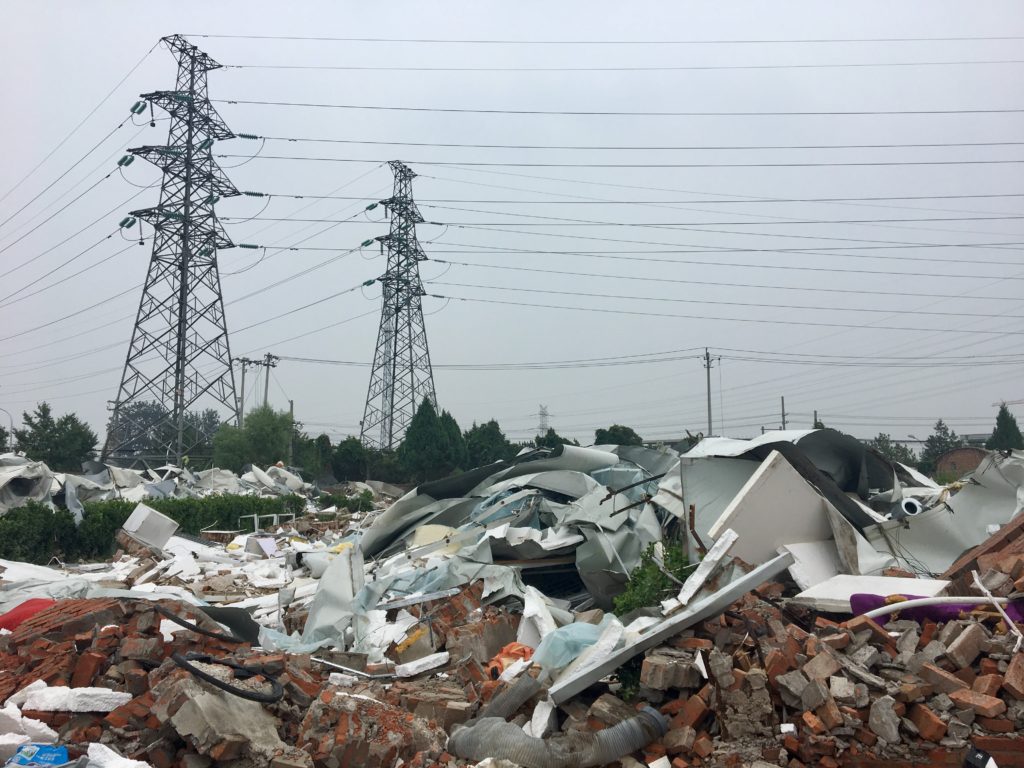
He is a member of the HutongTeam in Beijing and has many ongoing cultural and creative projects. Later, he plans to self-publish a hutong farewell zine.
You can find more information about him here.
Keywords: demolition; memory; heritage; visual methods; resistance; Beijing; hutong.
Jérémy Cheval, architect and artist, postdoctoral fellow, École Urbaine de Lyon
Jérémy is a close friend and an amazing architect, researcher and artist who used to live in Shanghai. His research focuses on the way ordinary residents and shop owners appropriate the lilong and shikumen spaces in the city. He contributed a lot to building community ties between residents and their houses through art projects and was deeply involved in shikumen lilong protection and neighbourhood historical heritage preservation. If you read French, you can check out his wonderful book, Vies d’un lilong (lilong lives). This year, he is also one of the organizers of this amazing exhibition called « Chine: Construire l’héritage » (China: Building Heritage) introducing Chinese architecture in Lyon.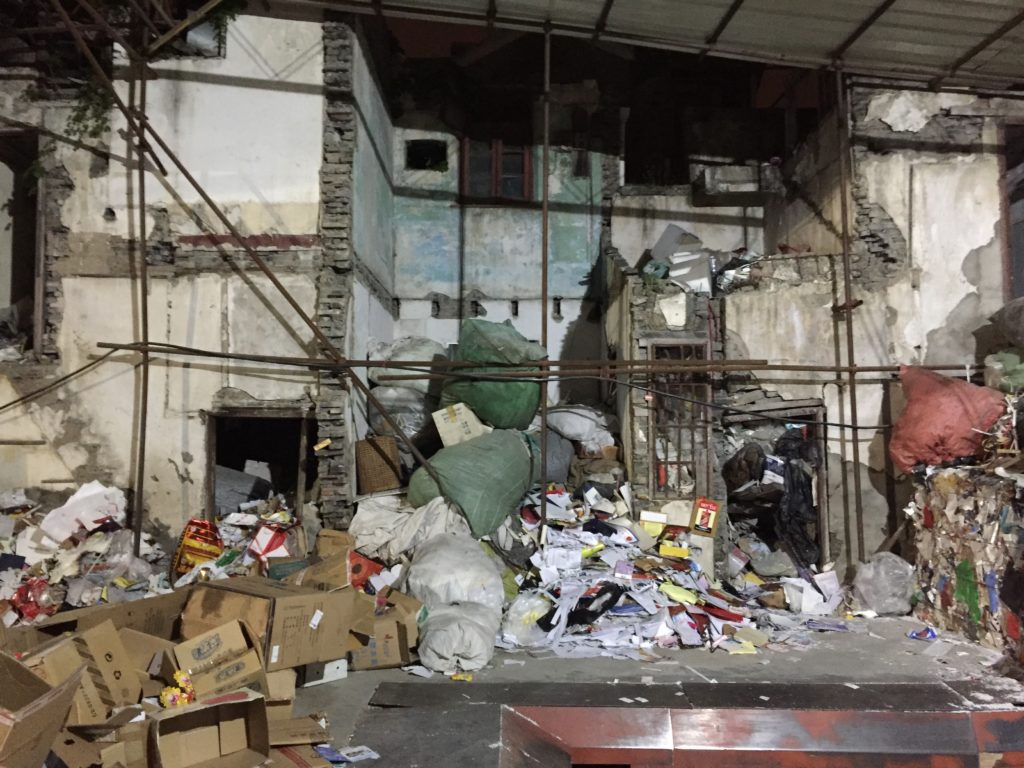 Jeremy Cheval is now carrying a postdoctoral research profect on « constructions and destructions » of vernacular dwelling processes in Shanghai, Beijing and Guangzhou. By looking at we call « non eternal » architecture, he’ll present qualitative survey on the movement of material and dismantelling process from the initial design intention. He questions the metabolism of the city in the anthropocene era. He also questions the influence of destruction in contemporary architecture. And at last he plans to build with a collective, a multidisciplinary temporary appropriation and experimentation in transitionnal neighbourhoods such as demolition sites. It follows « Kong Siwenli the fireflies gathering », an event he created in Dong Siwenli during his thesis on « Shanghai Shikumen Lilong, Socio-Spatial Transformations of Human Settlement. Appropriations in Shared spaces Beyond Destruction ».
Jeremy Cheval is now carrying a postdoctoral research profect on « constructions and destructions » of vernacular dwelling processes in Shanghai, Beijing and Guangzhou. By looking at we call « non eternal » architecture, he’ll present qualitative survey on the movement of material and dismantelling process from the initial design intention. He questions the metabolism of the city in the anthropocene era. He also questions the influence of destruction in contemporary architecture. And at last he plans to build with a collective, a multidisciplinary temporary appropriation and experimentation in transitionnal neighbourhoods such as demolition sites. It follows « Kong Siwenli the fireflies gathering », an event he created in Dong Siwenli during his thesis on « Shanghai Shikumen Lilong, Socio-Spatial Transformations of Human Settlement. Appropriations in Shared spaces Beyond Destruction ».
You can find his contact here.
Keywords: shikumen lilong; in-between spaces; everyday life; heritage; urban demolition; art and creation; resistance; communities; Shanghai; anthropocene.
Joscelyn Jurich, visual artist, journalist, and PhD candidate at Columbia University
Joscelyn is a truly amazing artist and researcher. She focuses her work on the topic of ruination and communication conflict and post-conflict areas (former Yugoslavia and Syria) and in the context of post-industrial capitalism. She is also a photographer and incorporates photography and visual sociological methods into her research. She designed an interdisciplinary course about ruins and ruination as part of her MPhil at Columbia, « Communicating Ruins, » that includes a unit on China’s « ghost cities. ». She is also a freelance writer who has worked as a journalist, media trainer and editor in the US, Croatia, Bosnia-Herzegovina and Egypt. She has been working on long term photography projects documenting ruins in former Yugoslavia, but you should definitely look at all her photography projects, including her photo series shot in Cairo.

I really like her series of photos shot in abandoned landscapes, confirming that she is a full urban explorer.
You can find more information about her on her personal website here.
Keywords: memory; photography; ruins and communication; post conflict societies; postsocialist and communist societies; former Yougoslavie; Egypt; Syria.
J.P. Sniadecki, filmmaker and scholar, Northwestern University
J.P. is an inspiring researcher and artist, assistant professor of radio/television/film. He is a filmmaker and anthropologist active in China and the United States, whose films explore collective experience, sensory ethnography, and the possibilities of cinema.
His films are in the permanent collections of New York’s Museum of Modern Art and the San Francisco Museum of Modern Art, and have screened at festivals such as the Berlinale, Locarno, New York, AFI, Edinburgh, Rotterdam, San Francisco, Viennale, Torino, BAFICI, RIDM, Cinema du Reel, FICUNAM, and DOChina as well as at venues such as the 2014 Whitney Biennale, the 2014 Shanghai Biennale, the Guggenheim, Vienna’s MAC, Beijing’s UCCA, and the Shenzhen Biennale. His films include Chaiqian/Demolition (2010), winner of the Joris Ivens Award; Foreign Parts (2010), winner of two Leopards at Locarno and named Best Film at the Punto de Vista Film Festival and DocsBarcelona; People’s Park (2012), named Best Anthropological Film at Festival dei Popoli; and Yumen (2013), named Best Experimental Film and Best Chinese Film at the Taiwan International Documentary Film Festival. Sniadecki’s latest feature, The Iron Ministry (2014), was A.O. Scott’s « Critics Pick » in the New York Times and has screened widely and garnered the top prize at L’Alternativa Film Festival and jury prizes at the Ann Arbor Film Festival, Valdivia, and Camden. Coorganizer of the traveling film series “Cinema on the Edge » and « China Now, » which showcase independent cinema from China, he has written articles and interviews for Cinema Scope and contributed essays to Visual Anthropology Review and the edited volume DV-Made China (Hawaii University Press).
Keywords: visual methods; anthropology and ethnography; urbanity; demolition; post-industrial ruins; Yumen; Chengdu.
Katiana Le Mentec, anthropologist, EHESS, Paris
Katiana is a specialist of the anthropology of disasters in contemporary China. After long-term fieldwork on the social impact of the massive migration induced by the Three Gorges Dam, her current research is focusing on the ruins of the Sichuan earthquake and the dilemmas of heritagization in Wenchuan.
You can find her webpage here.
Keywords: disaster; memory; trauma; ethnicity; relocation; earthquake; Sichuan.
Mar Alzamora-Rivera, Transdisciplinary artist, speaker, educator and cultural manager based in Panama
Mar is an advocate of experimental and new music and sound studies. Her poetry and short films have won multiple local and international awards. Her literary work has been translated into English, Arabic and French. She holds a certification from the Deep Listening Institute and Nada Yoga (Yoga of Sound). She holds a Bachelor of Arts, Music (Arizona State University) and a Master’s Degree in Sociocultural Animation and Community Development. This year she was a recipient of the Ibermusica Ibero American Fund and she was selected the prestigious the Bio Summit organized by the Massachusetts Institute of Technology’s Media Lab (Arts and Science).
I am an artist from Panama. I am highly interested in this research since it is very close to what I do. This project is profoundly poetic and sound oriented. In the past few years, I have been working with sound, memories and the city. My goal has been finding the relationship between those three. I usually organize and record « sondwalks » to study how the city construct and (de)construct our memories. I base my artistic practice in Deep Listening (R).Two years ago, I was invited as a guest artist to the X Central American Biennale / X Sounding. I participated with my project « Who we are, who we were » which reflect on the issue of memory, sound, and gentrification of Panama City.
The link to the project is here.
Keywords: sound; film; urban landscape; memory; poetry.
Matteo Damiani, photographer, artist, and journalist based in Beijing
Matteo Damiani is one of the journalists behind China Underground. Matteo’s photographs had a huge impact on me and I hope you will also enjoy discovering his findings regarding the Chinese urban « suburbs » and peripheral areas. He uses the very intersting notion of « Suburbia » to qualify both low-income urban villages and newly-built failed projects. For a first glimpse at his work, you can look at this amazing portfolio.
You can find his contact here.
Keywords: « ghost cities »; suburbian China; photography; everyday life; Yunnan.
Myriem Alnet, writer, urbanist, and artist based in Hong Kong
Myriem is one of the most interesting people I met in Hong Kong last year. She moved there after living in Ho Chi Minh city. She is an urbanist and writer, eager to inquire into the socio-cultural mutations of a so-called “transitioning vietnamese city” in a post-socialist economy. With her collective of urbanists and architects, she cares to refresh debates on city-making by bringing comparative perspectives – photography and social science for example – and experimenting new practices of the urban space. Her latest event called « Playtime festival » was organized in Ho Chi Minh city in July 2018 and it was about games and place-making in the urban space. Her new project is about a ruin in Hong Kong, and I can’t wait to see it develop…
You can find her amazing website here.
Keywords: memory; photography; city; resistance; creativity; Vietnam; Hong Kong; Southeast Asia.
Nathan Attrill, researcher, Australian National University
Nathan’s PhD research project focuses on revitalisation politics in China’s Northeast provinces and their effects on the policy process and ideological debates around economic reform. It involves going to and studying areas in northeast China which are undergoing long-term economic deindustrialisation and decline and better understanding the government’s attempts at urban revitalisation and its effect on the people living among the ruins of previously dynamic industrial areas. His work implies ethnographic fieldwork in areas of deindustrialisation, showing that these places are a distinct « rust belt society » with their own unique politics and culture. You can find more information about Nathan’s research and his contact here.
Keywords: deindustrialization; rustbelt culture and politics; everyday life; Northeast China.
Phuong Phan, architecture student, Leibniz Institute for Research on Society and Space
Phuong studied art and architectural history and Asian studies with focus on Southeast-Asia in Hamburg, Paris and Berlin. At this moment, Phuong is preparing a master’s thesis focusing on the political, socio-cultural dimensions of Chinese Shophouses in Ho Chi Minh City (former Saigon). Among others colonial architectural buildings, Chinese shophouses are going to be torn down due to the fast modernization process in Vietnam. Phuong also works as an research assistant for a project on the works by architects of the GDR and their afterlife in post-communist and socialist countries. One of the case studies is China, where a lot of buildings by those architects can still be found today. Most of them are ruins or are slowly dissolving in the city’s image, apart of a few exceptions alike the Dashanzi complex. She especially looks at the physical presence of those buildings as architectural heritage but also as collective memories for the inhabitants or city dwellers. You can find more information about her here.
Keywords: memory; heritage; disappearing buildings; colonial architecture; postsocialist ruins; GDR; Vietnam.
Sun Ziwen, PhD candidate, University of Edinburgh
Ziwen understands urban ruins also in terms of different trajectories of transition in contemporary China for example with the redevelopment of 798 in Beijing and M50 in Shanghai, which became art centres; or a transition process of Renli Residential District in Harbin (now the baroque ruins are suspended as a compromise between a decreasing hegemony and an increase in collective powers). These urban ruins represent a very interesting and genius loci, free space and novelty, or conflict and resistance of heterogeneous actors in contemporary city-life. The physical(art) or non-physical(suspending) spaces engage many visitors to enjoy the unusual experience that is different than their everyday life.You can find more about him and his research here.
Keywords: public space; resistance; walkability; art district.
Thuy Pham, filmmaker based in Vietnam
I have my personal obsession with ruins, destruction, demolition and abandon places in Hanoi, my hometown and I’ve shown it via some of my works.
Thuy Pham does personal photography project on urbanity, especially interested with female workers who work on construction sites. You can watch her projects here:
1. « Used to be », an experimental film on the urban nightmarish tranformation
2. « XX2061 », a short fiction film about a clumsy robot who was assigned to take care of an old lady who has demantia
Keywords: Vietnam; film and visual methods; dystopia; urbanity; demolition, abandon.
Timmy Chen, assistant professor in film studies at Hong Kong Baptist University
Tina Kanagaratnam, founder of Historic Shanghai
Tina is the founder of Historic Shanghai, a heritage association focused on telling Shanghai’s layered history on walking tours, and that necessarily means exploring both ruination and rebuilding, and the spaces of memory in the urban fabric.
Keywords: Shanghai; cultural heritage; memory; ruination.
Tong Lam, urban explorer, Associate Professor in art history at the University of Toronto
Tong Lam has been doing pioneering experimental research on Chinese contemporary ruins as a scholar, an urban explorer, but also an artist. In 2013, he published a fascinating photography book entitled Abandoned Futures with a very interesting transversal experience of urban exploration, from Detroit to Taiwan. You can visit his two websites, his personal website, and his website about his visual projects.

He is a top reference to learn about Chinese modern ruins. For instance, I find his photographic essay « Unreal Estate » very inspiring for critical theory.
You can find more information about him and his academic contact here.
Keywords: urban exploration; visual methods; urban China; history; postsocialist countries; Cold War ruins.
Wu Ka-ming, anthropologist, Associate Professor, The Chinese University of Hong Kong
Ka-ming is an incredible anthropologist who moved from researching rural China in Yan’an to the urban wastescapes of the Beijing suburbs. She carried out long-term fieldwork on the waste pickers of Beijing and published a book which I highly recommand.
You can find more information on her research and her contact here.
Keywords: wastescape; urban migrant workers; anthropocene; Beijing suburbs; Shaanxi province.
Yimin Zhao, geographer, assistant professor, Renmin University, Beijing
Yimin’s research focuses on the socio-spatial processes of urban change, attending particularly to the role of the state in politico-economic dynamics of urban land and environment. Trained as a Human Geographer, he uses urban ethnography in particular to understand microphysics of power relations and state processes in the everyday life, so as to uncover the logics of urban/environmental politics and their socio-spatial effects. His doctoral thesis investigates agency and agents of the state-led and land-based urban accumulation during the last few decades of urban metamorphosis. With Beijing’s green belts as the study site, he identified that the state’s land business is a total project, where the hegemony of urbanisation has been established with ideological resources, political institutions, ecological masks, and the social fabric – all are subordinated to a renewed territorial logic of the Party-state to work spatial miracles and hence sustain its legitimacy. The issue of ruins plays a key role in his thesis: the very first section of the Introduction chapter is actually entitled « The state of ruins, » where he proposed to study the feeling of being in a state of ruins where “all that is solid melts into air,” on the one hand, and the ruined status quo of the state, on the other. He would like to contribute to further explorations of the mechanism, textures, materialities, effects and ethics of the urban ruins. He is now developing a new project on the issue of urban densities in Beijing.
Keywords: land; eco-criticism; everyday life; state domination; urbanistic hegemony; green belts; Beijing.
Yingyi Wu, Performance/visual artist based in Utrecht, the Netherlands
Yingyi has a lot to bring to the network from the angle of « the texture of ruins ». She has witnessed urbanisation and contemporary ruins since her youth, the phenomenal and devastating scenarios constantly shake her awareness as a citizen. Driven by arising more awareness of both environmental and collective mental issues caused by such ruins, she has done research about migration and demolition in China since 2017. And her graduation performance/Installation (Barefoot-Walk on the wild side: https://vimeo.com/
You can find more information about her work on her website: http://yingyiwublog.
Keywords: visual methods; sensorial approach; heterotopia; in-between space; urban China; anthropocene.
